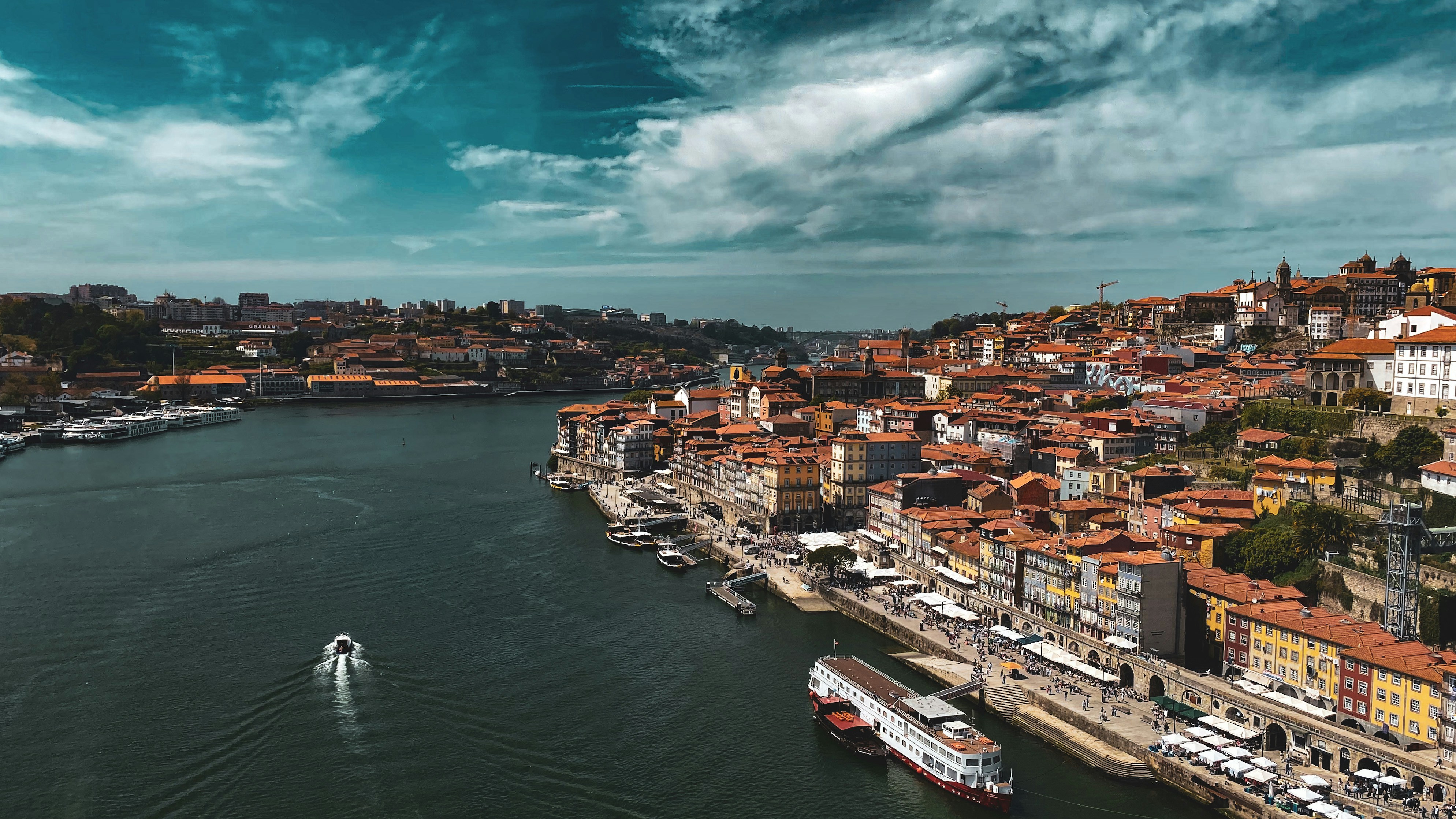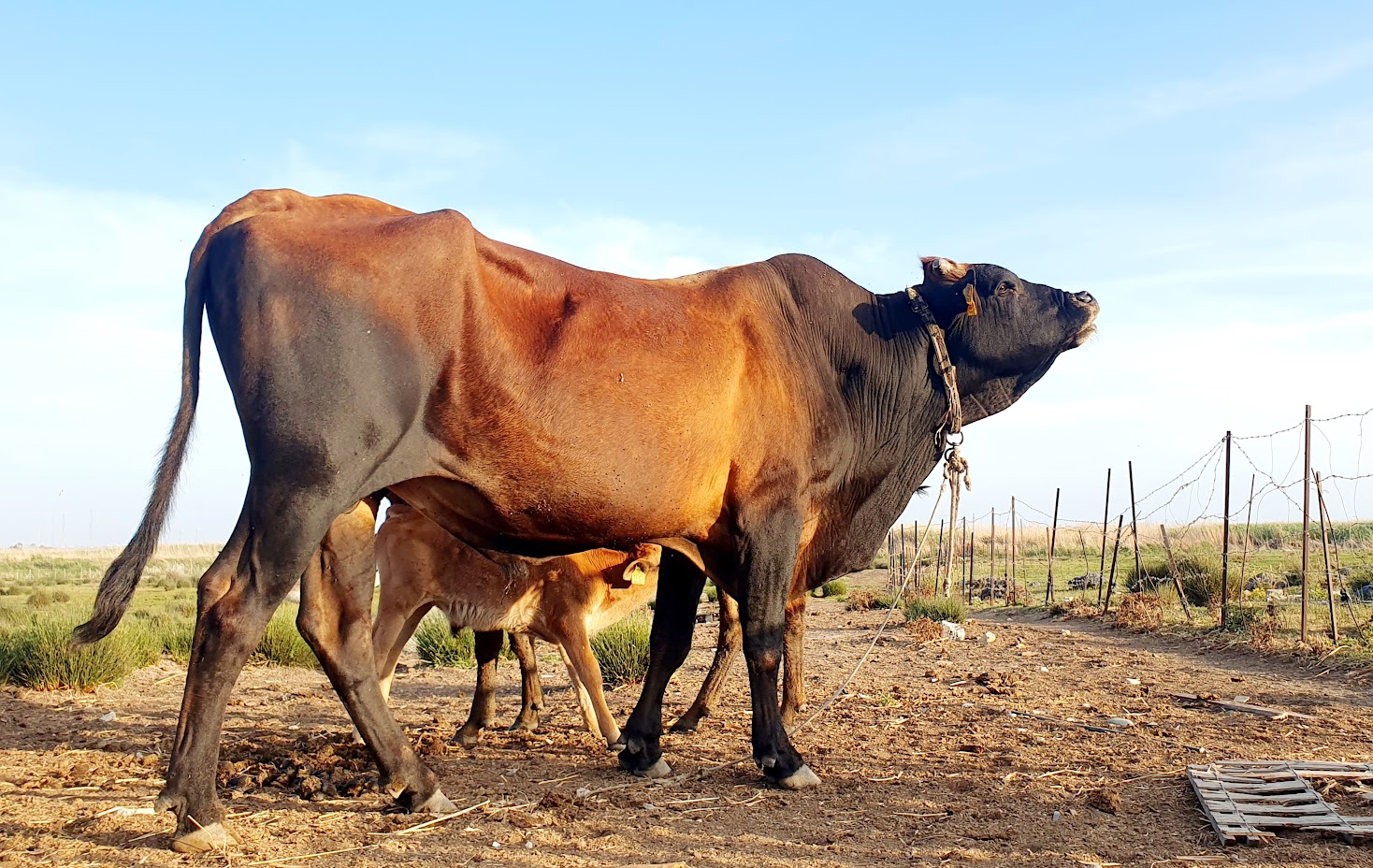The peaks are rounded, the air is thin, and the light moves differently here. At this altitude, colors lose their edge; the landscape feels almost monochrome, a world of stone, grass, and sky.
Scattered across these slopes are small granite villages, built from the same rock that defines their surroundings. From a distance, they seem to grow out of the hills themselves, their houses blending into the earth. Seen up close, they reveal an intricate balance between endurance and care.
Villages of stone and wind
Each village in the Serra da Estrela carries its own rhythm. In Linhares da Beira, the houses are tightly gathered around a medieval square, their walls heavy and smooth. The roofs are tiled in faded red, and the windows framed with stone lintels polished by centuries of weather. Above the village, a ruined castle watches the valley, its towers open to the sky.
Further south, in Sabugueiro — often called the highest village in Portugal — the streets twist between low stone houses and small terraces. The sound of running water follows you everywhere; streams cross under bridges, down walls, and between gardens. Goats graze on the slopes nearby, their bells faint in the wind.
Everything here feels both exposed and protected. The villages endure, but they do not fight their surroundings. They accept the seasons, the frost, the silence.
The shape of the mountains
The Serra da Estrela is not a dramatic range. Its peaks are worn and rounded, its valleys broad and slow. The highest point, Torre, reaches just under two thousand meters, but the openness of the plateau gives the impression of vastness.
The landscape changes constantly — granite ridges, pine forests, sudden lakes formed by melting snow. In winter, the slopes turn white, and the air carries the smell of wood smoke. In summer, the ground glows gold with dry grass, and the rocks shimmer in the heat.
It is a place of contrasts, but never of extremes. Everything moves toward balance: the light, the wind, the stillness.
Paths between villages
Old stone tracks connect the villages, tracing lines that have existed for centuries. Shepherds once walked them with their flocks, following the rhythm of the seasons. Today, many of these paths remain open — some restored, others half hidden beneath grass and moss.
Following them on foot or by bicycle, you pass terraces cut into the slopes, small chapels built from local stone, and fountains where cold mountain water runs clear. The routes are quiet, broken only by the sound of wind and bells.
Many cycling holidays in Portugal include the Serra da Estrela for this reason. The climbs are steady, the roads nearly empty, and the scenery changes slowly enough to be absorbed. The pace fits the land — patient, deliberate, unhurried. Along the way, you might stop in a village square for bread and cheese, or rest beside a stream where the mountains reflect in shallow pools.
Moving through this region, you begin to understand how closely human life here has been shaped by effort and restraint.
The weight of granite
In the Serra da Estrela, stone is more than material — it is language. The houses are built not for show but for survival, their walls thick and low, designed to hold heat in winter and release it in summer. The texture of the granite gives everything a sense of permanence. Even the smallest cottage feels monumental.
Doorways are narrow, steps uneven, and roofs steep to shed the snow. Many homes still keep animals on the ground floor, a habit from older times when warmth was a shared resource. The air inside smells of smoke and wool.
The same stone that builds the houses also forms the fences, wells, and troughs. Every object belongs to the same family of materials, giving the villages a rare unity. Nothing feels decorative, yet everything carries beauty.
The people and their work
Life in the Serra da Estrela has always been defined by effort. The region is known for its shepherds and its cheese — Queijo da Serra — made from the milk of ewes that graze the mountain grass. The process is slow, done by hand, using a thistle flower instead of rennet to curdle the milk. The result is soft, pale, and faintly earthy, like the landscape itself.
Wool has long been part of the region’s identity too. In some villages, you can still find old looms and workshops where blankets and scarves are woven from local fleece. The patterns are simple, geometric, and precise — echoes of the landscape translated into fabric.
The rhythm of daily life remains steady. Work begins early, ends with the sunset, and follows the seasons rather than the clock.
Evening in the Highlands
As the day ends, the light softens and the granite begins to glow. The shadows of the mountains stretch across the valleys, and the air cools quickly. Smoke rises from chimneys, and the sound of dogs echoes through the alleys.
The sky above the Serra da Estrela is vast and unbroken. On clear nights, the stars appear sharp and close, reflected faintly in the lakes below. In the silence, even the smallest sound — the rustle of leaves, the creak of wood — feels amplified.
It is a landscape that rewards stillness. You begin to notice the slow rhythm of things: the fading light on the stone walls, the smell of pine carried by the wind, the faint outline of distant peaks against the night.
The endurance of place
The granite villages endure because they belong to their surroundings. Nothing in them feels imposed or temporary. The walls, the roofs, the terraces — all seem to have grown from the same rock.
In a world of movement, they offer a sense of permanence. Standing in one of their quiet squares, you can feel how deeply time is layered here. The air carries the memory of centuries — of footsteps, bells, seasons repeating without rush.
The Serra da Estrela is not a landscape of spectacle, but of patience. Its beauty lies in what remains.







Click here to change your cookie preferences